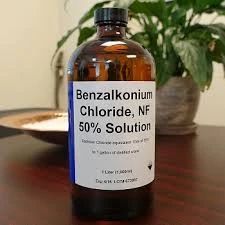pbtc phosphonate
Exploring PBTC Phosphonate Applications and Advantages
Phosphonates are an important class of compounds in chemistry, often characterized by their ability to bind to metal ions and stability under a variety of conditions. Among them, PBTC (Phosphonobutane Tricarboxylic Acid) phosphonate stands out due to its unique structural features and a range of applications across various fields including water treatment, agriculture, and industrial processes.
Structure and Properties of PBTC Phosphonate
PBTC is a phosphonate that contains a phosphonic acid functional group and tricarboxylic acid moieties. This molecular composition endows PBTC with a high affinity for metal ions, making it particularly useful for sequestering heavy metals in environmental applications. Its structure allows for the formation of stable chelates with metal ions, which can significantly reduce their toxicity and facilitate their removal from water resources.
The stability of PBTC under different environmental conditions, including variations in pH and temperature, further enhances its applicability. PBTC remains effective in diverse water chemistries, which makes it ideal for use in water treatment facilities that need to adapt to changing contamination profiles.
Applications in Water Treatment
One of the primary applications of PBTC phosphonate is in the field of water treatment. The compound is employed as a scale inhibitor and a corrosion inhibitor in cooling systems and industrial water systems. Scale formation is a common issue in many industrial processes, leading to reduced efficiency and increased maintenance costs. PBTC acts by interfering with the crystallization of scale-forming minerals, effectively preventing the buildup of deposits on equipment surfaces.
Furthermore, PBTC can be used to stabilize heavy metals in effluents, allowing for safer disposal or more straightforward removal processes. By binding to these metals, PBTC reduces their bioavailability, thereby minimizing environmental risks associated with heavy metal contamination in water bodies.
Role in Agriculture
pbtc phosphonate

In agriculture, PBTC phosphonate has gained attention for its ability to improve nutrient uptake. It can be utilized as an additive in fertilizers to enhance the availability of essential micronutrients. By chelating with metal ions such as iron, manganese, and zinc, PBTC increases the solubility of these nutrients in the soil, making them more accessible to plants. This property is especially important in soils with high pH levels, where nutrient availability can be significantly limited.
Additionally, the use of PBTC in agriculture can contribute to more sustainable farming practices. By improving nutrient absorption and reducing the environmental impact of excess fertilizers, PBTC helps in promoting healthier plant growth while protecting water quality.
Industrial Applications
Beyond water treatment and agriculture, PBTC phosphonate is also finding applications in various industrial contexts. Its ability to act as a corrosion inhibitor is beneficial in manufacturing processes and in oil and gas extraction. PBTC can be added to drilling fluids and other formulations to protect metal equipment from corrosive damage, thus extending the life of machinery and reducing downtime.
Moreover, PBTC's effectiveness in preventing scaling in heat exchangers and boilers aids in maintaining operational efficiency across numerous industrial sectors. This efficiency translates into cost savings and improved productivity, which are critical in highly competitive markets.
Conclusion
PBTC phosphonate exemplifies the versatility of phosphonates in modern applications. Its unique properties facilitate its use in water treatment, agriculture, and various industrial processes. As industries increasingly prioritize environmental sustainability and resource efficiency, the role of compounds like PBTC will likely expand.
Researchers continue to explore and optimize its applications, paving the way for innovations that harness its benefits. Given the pressing global challenges of water scarcity, soil degradation, and industrial waste management, PBTC phosphonate stands at the forefront of technology aimed at solving some of these critical issues. By understanding and leveraging the properties of PBTC, stakeholders across multiple sectors can contribute to a more sustainable future.
-
2-Phosphonobutane-1,2,4-Tricarboxylic Acid: Scale & CorrosionNewsAug.29,2025
-
Premium Isothiazolinones | Broad-Spectrum Biocidal SolutionsNewsAug.28,2025
-
LK-319 Special Scale And Corrosion Inhibitor For Steel Plants: Advanced Solutions for Industrial Water SystemsNewsAug.22,2025
-
Flocculant Water Treatment: Essential Chemical Solutions for Purification ProcessesNewsAug.22,2025
-
Isothiazolinones: Versatile Microbial Control Agents for Industrial and Consumer ApplicationsNewsAug.22,2025
-
Scale Inhibitor: Key Solutions for Water System Scale PreventionNewsAug.22,2025





